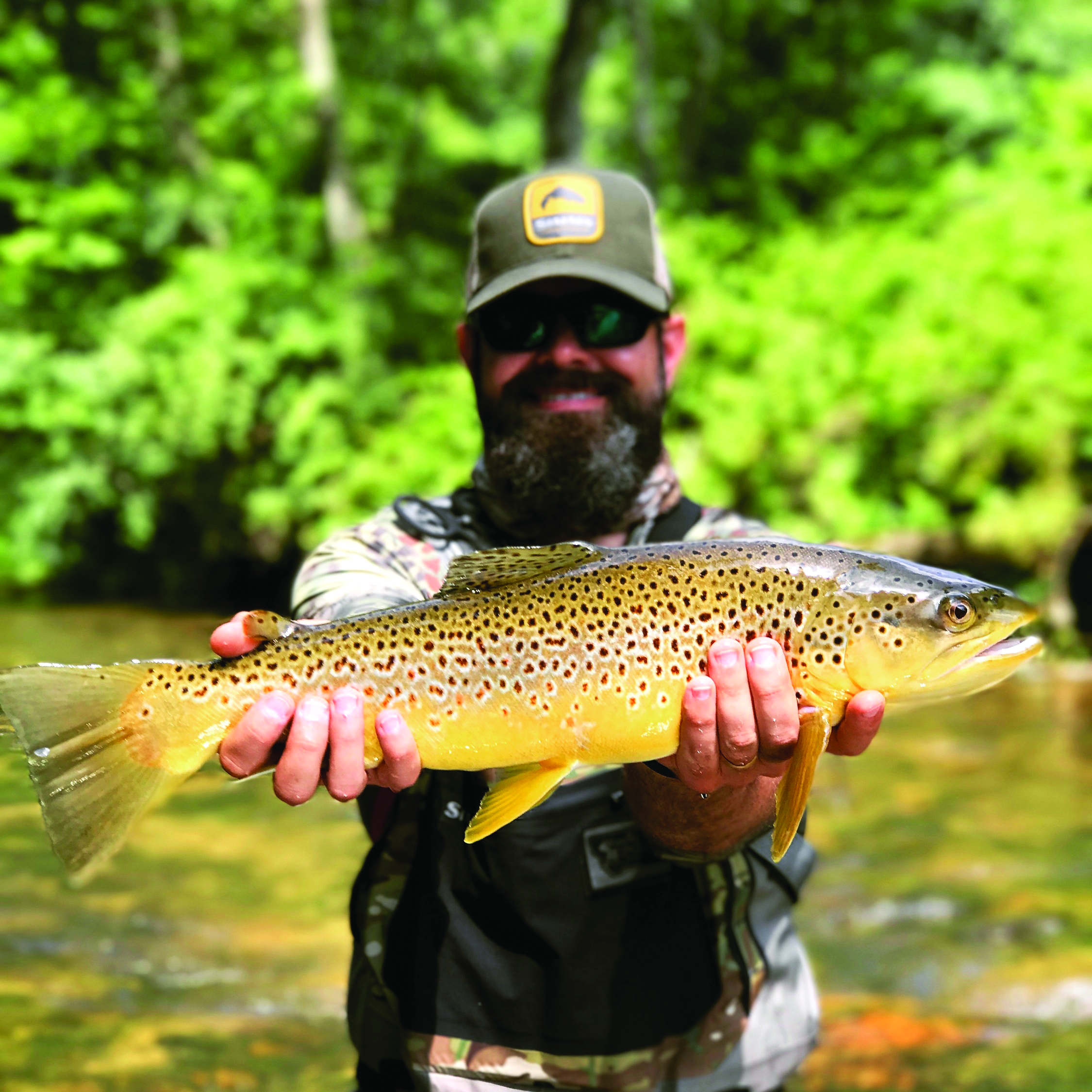by James Bradley
September is a month when we usually have low water and some relief from the high temperatures that are usually widespread across the Southeast. Since we have had a good amount of rain as of mid-August, it is hard to tell what our early fall water conditions will be like.
Normal September and early fall conditions with low water means – Stealth! You simply cannot catch a trout that you have spooked and it has gone a hundred feet either upstream or downstream. Low water conditions also require some tactics that many anglers do not know about or simply choose not to do. Here’s the short list: observation, learning to use obstacles and cover and finding a trout’s new holding area.
I always tell clients when fly fishing that they are a hunter. Those with a hunting background understand quickly the importance of stealth. Clumsiness, stumbling, stepping on a limb that breaks underwater or even up on the bank prior to entering the stream, wading too fast, talking to loud, allowing studded boots to slip causing the grinding effect or allowing rod guides to reflect sunlight off them during a cast; these decrease your opportunities for hookups as trout have superior senses like eyesight, inner ear for hearing and even a lateral line for vibration sensing.
Observation is a key component to know what is going on and where the trout are. Just because you are going fishing doesn’t mean it has to be fishing. Observe the stream from a high bank by staying low to the ground or from behind an obstacle like a tree to hide your presence. Take five minutes and watch everything that comes alive. You can learn more about trout and insect behavior in five minutes than you can fishing for ten hours. Have a decent set of polarized sunglasses as they are essential. I use amber lenses, but this color is not for everyone. It is easy to see a trout rise to a fly, but many will miss a trout sipping a fly. Be observant. You will have to train your eyes to see the flicker of a tail or to see a shadow of a trout. Be observant. Trout turn sideways when feeding on nymphs off the bottom. This is a flash you may see. Again, be observant, as it will pay dividends in the end.
Use obstacles and obstructions for your benefit. Here are just a few to be aware of: I see anglers that will climb up onto a large rock to cast from. This angler has spooked everything around that vicinity. What did not flee during the climb onto the rock will surely leave out as soon as the fly rod is raised. Stay down and behind the rock to make your cast. Most of our mountain streams decent quickly leaving higher white water to our front as we move upstream. Use the higher elevation of the stream for your benefit by making your approach to your casting spot as low as possible. Do not blow the opportunity by walking upright to this casting spot! Use that large log out in the stream as cover to cast from. These little things will make for more hookups.
The trout you caught back in the spring will probably not be in the same riffle or run. As water conditions change, a trout’s lie will also change. This is not necessarily because they wanted to move but because of what Mother Nature is offering them. When low water appears, feeding lanes change. Learn to read the water and have a basic understanding of a trout’s needs. After you learn to read the water, you will know where all the trout’s lies are. You just simply target that spot and possibly hook up with a trout of a lifetime!
Don’t forget about asking us about our float trips. We are currently doing floats on the Toccoa Tailwater at this time. She has been fishing pretty good with some days being awesome! Give Us a Call, and We’ll Hook You Up!
Reel ‘Em In Guide Service is the only Orvis Endorsed Fly Fishing Guide in North Georgia’s Historic High Country region. They have been offering their services to fly anglers since 2001. They have permits for guiding in North Georgia and North Carolina, offering over 7 miles of private trophy waters across Georgia, and operate drift boat trips on the Toccoa River in GA and the Tuckasegee River in NC.
